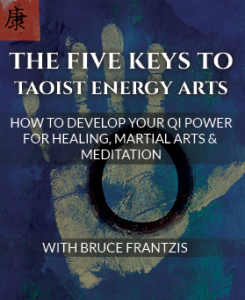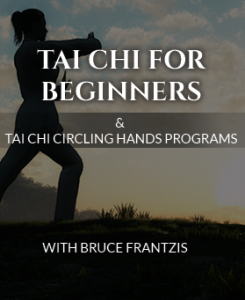In ancient China, the Chen village kept tai chi chuan a closely guarded secret for over a century and refused to teach it to a single outsider. Having a superior martial art such as tai chi chuan enabled the village to stay safe from marauding bandits and securely conduct business without their goods being stolen or having to pay protection money. The villagers developed the internal martial art of tai chi chuan to a very high level.
In the nineteenth century, an immensely talented and motivated young man with a great love of internal martial arts, by the name of Yang Lu Chan, was told by his teacher that if he wanted to progress, he needed to go to the Chen village to study tai chi chuan.
Yang went to Chen village, asked to be admitted and was summarily refused. The tai chi chuan teachings were secret and forbidden to non-family members. Yang devised an immensely disciplined strategy. Posing as a deaf-mute, he obtained work as a servant in the house of the teaching master.
A diligent and cheerful worker, over time he became trusted enough to be given free reign of the house, including the keys to the locked doors surrounding the tai chi chuan training hall. Keeping himself hidden, he secretly watched the classes and practiced late into the night when everyone was asleep, no doubt overcoming years of sleep deprivation to succeed.
At the time, the Chen style tai chi chuan master had a dilemma. The next generation of the village was resting on the family laurels and not training sufficiently. The tai chi master was greatly concerned and saddened, and feared that his family’s art of tai chi chuan would be lost. One night Yang was caught watching tai chi chuan. He was dragged down to the tai chi chuan training hall. The students, not wishing their position to be usurped, demanded his execution for breaching security-a reasonable response in nineteenth-century China given the circumstances.
Speaking for the first time, future Tai Chi Master Yang profusely apologized. A shocked Chen master then pondered the implications of the discipline required to maintain this deaf-mute act for years. Yang begged the Chen master to be allowed to learn his art of tai chi chuan. He then challenged his would-be executioners and, one by one, using their own tai chi techniques, Yang managed to defeat them.
The tai chi master, who was truly searching for a good student to pour his knowledge into, wondered what Yang could do if he got the full meal rather than only the crumbs. After a psychologically grueling three-day test of character, Chen accepted Yang for what ultimately became an 18-year tai chi apprenticeship. After completing the full tai chi chuan training, Yang left the village with his teacher’s blessing to go out into the world and teach however he thought fit.
So if you are already doing tai chi, keep practicing as Yang did. Keep focusing on going inside and becoming aware of what’s inside. All you’re going to find is what’s there. And, make sure you take the time to find out about your teachers because it can mean the difference in how far you advance in a subject.
By the way, after receiving his tai chi master’s blessing, Yang traveled around and challenged China’s best internal and external martial arts exponents. He convincingly defeated all of them without injuring anyone-a sign of truly remarkable skill.
Gradually he found his way to the imperial capital Beijing, did the same there, and became the teacher of tai chi chuan of the imperial guards and many aristocrats, something that can be linked to the spread of tai chi in China. Although most wealthy aristocrats were not fighters, they found that the tai chi’s energy work did wonders for their health and general vitality…maybe you will too.
Stay good,
Bruce





Although I was aware of the details I found this to be a very well written post and enjoyable reading. Thanks.
His form is still around, is about twenty percent longer than the popular Yang Long Form and is called the Old Yang Form. It contains some jumping about and explosive Fa-Jin moves similar to Chen style and probably has style signatures of many other masters from being handed down. It takes years to learn but to some it is worth it. I would like to mention that your book on the internal arts for the Tai Chi student is excellent and contains a wealth of information about Tai Chi. If I had only had it when I was starting. It took me years just to understand that Master Cheng was transitioning seamlessly from AN to PENG energies when he uprooted. I acquired slow motion films slowed further and used stop action on high quality VCR watching him and in chapter four of your book you casually mention it explaining he favored this technique because he was short. He also slid his lead foot in changing his center to under the opponent. Of course what you can see is the result of what has already happen internally.
You have given us so much more detail–and inspiring ones at that–than any other account of this amazing transfer of tai chi knowledge. Much of the knowledge could have been lost without his diligence and extraordinary courage. Looking forward to your Yang Style training materials.
Great article, what discipline and dedication!
Awesome clarity
I watched the movie (TaiChi Hero) and I was amazed by their moves, they were fluid and used physics to knock down opponents. The movie introduced me to tai chi and I began practicing last year.